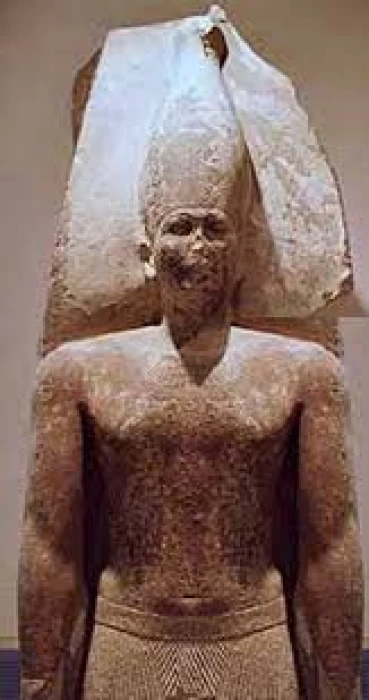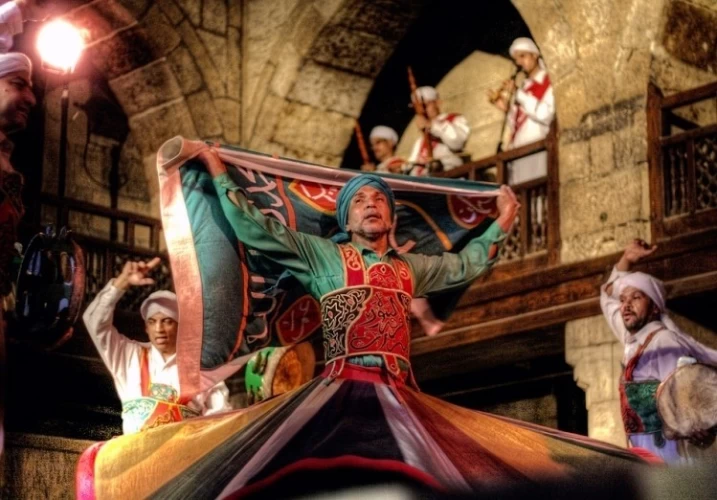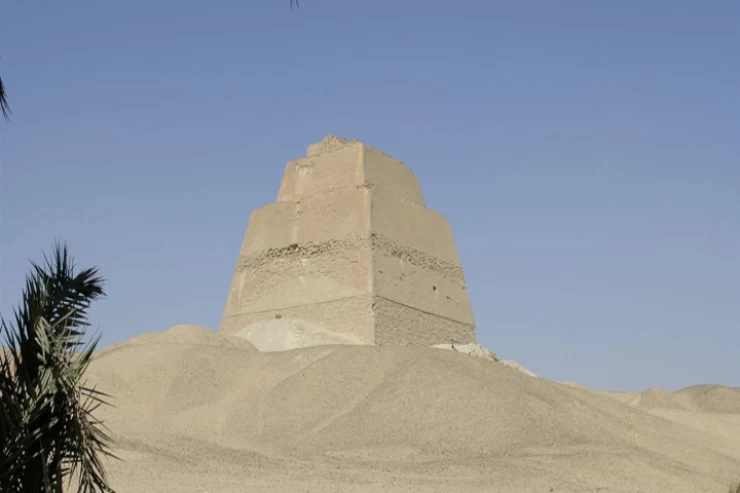
King Snefru | Founder of the Fourth Dynasty
Sneferu, known as Saoirse in Greek (according to maniton), was the founder of the Fourth Dynasty during the Old Kingdom. Estimates of his reign vary between 24 and 48 years. His reign was marked by the expansion of foreign trade, the sending of punitive expeditions, and mining expeditions. Together with his engineer and consultant Imhotep, he came up with the complete shape of the pyramid, where he built three pyramids that remain to this day, and they can be visited in Dahshur. It is not completely known whether Sneferu is the father of Cheops or his uncle. Cheops ruled Egypt after Sneferu.
His family
Sneferu married hatep Haras, who is believed to have been the daughter of his former Pharaoh, Huni. His father-in-law may also be his father, according to some researchers. According to this hypothesis, Huni fathered a eunuch by a royal wife, while Sneferu fathered a concubine. Therefore, the marriage of Sneferu was his passport to the throne.
His region
Most likely, the transition of power from the Fourth Dynasty was peaceful. He married Sneferu (son of King Huni by a subsidiary wife) with the right to inherit the throne. He founded the Fourth Dynasty. This is confirmed by literary sources, as one of the writers of the Median state mentioned in his texts: "after His Majesty King Huni died, His Majesty King Sneferu was installed as a virtuous King in this whole world". Who is King Sneferu? Sneferu is the shortened name of "Ptah sneferoy", that is,"Ptah camel". According to the history of maniton, Sneferu ruled for 26 years, and the Turin papyrus mentions 24 years. The German archaeologist "Stadelmann" calculates that he ruled for 48 years, based on the fact that during the reign of Sneferu, 24 censuses were conducted in Egypt, and usually the census was done every two years. From here, Stadelmann believes that the reign of Sneferu lasted 48 years. And we know a lot about the news of Sneferu through the stone of Palermo, from which he erected a huge number of palaces and temples. That Queen " MERS-Ankh "is Sneferu's mother, and it is likely that she was one of King Huni's secondary wives, and that Sneferu deserved to inherit the throne by marrying Princess" hatep – Haras ", daughter of Huni, who bore the title of" daughter of God ", and that their marriage took place before the death of Huni, the last king of the Third Dynasty.
Trade exchange with Phoenicia
He is considered to have combined strength and mercy, so he ruled and led his country and his people to a better life, overshadowed by security and peace. During his reign, the economy was revived thanks to his encouragement to establish trade relations with Phoenicia (present-day Lebanon) and he improved the use of his country's resources.
In particular, he was sending naval fleets to the port of Byblos (present-day Lebanon) for trade exchange . Among those trade missions, he sent a large fleet of forty ships to bring cedar "pine" timber . According to the Palermo stone, these woods were used in the manufacture of doors and some internal parts of the King's pyramids, and were also used in the manufacture of ships . A marble stone also mentions the construction of sixty ships, each with sixteen oars.
Military activity
Pharaoh Sneferu took care of securing the borders, so he launched a campaign to Nubia to restore security and tranquility to the southern borders of Egypt. This campaign is mentioned on the second face of the Palermo stone, and from the figures, it is clear to us how much resistance King Sneferu faced there. His army returned with 7000 captives and 200 thousand head of oxen and sheep.
King Sneferu called the Sudanese by the name of "nehsio", and by this name was meant all the tribes inhabiting south of the Egyptian border. These areas were also called "Nob", where the" Nob", which is gold, was extracted from them in the ancient Egyptian language. (From which came the modern designation in Arabic, where these areas are called "Nubia".)
Send disciplinary campaigns to the Sinai Bedouins, who were changing on turquoise and copper mines and trade caravans . An inscription of him was found on the rocks of the cave mountain representing King Sneferu disciplining prisoners. He also deserved to be glorified as the protector of the region along with the idols Hathor and Subd.
He sent another expedition to Libo (present-day Libya ) and brought from it 11 thousand captives and 13 thousand heads of oxen and sheep.
Administrative organization
He created the post of Minister of tiati, which appeared for the first time in his reign. There is no stronger evidence than the presence of representatives of the Egyptian territories inscribed on the walls of the valley temple of Dahshur, the oldest inscription of the Egyptian territories found.
The modernization of the Administrative Organization of Egypt was necessary to carry out Sneferu's purposes of building two pyramids in the same place. This huge work used a quantity of stones estimated at about 3,842,000 cubic meters of limestone. The amount of stones used by King Khufu, who came after him in the construction of the Great Pyramid, was estimated at about 2,500,000 cubic meters.
The construction of the pyramids over many years required the establishment of a residential city for workers and engineers. They lived with their families near the place of work. The administration provided them with food, drink, and clothing, and we know that each of the workers had a share of bread, garlic, and beer daily, which he received until he devoted himself to his work on the construction of the pyramids. And sometimes they were offered meat and birds.
His statues
A granite stone head that may have belonged to King Sneferu is currently kept at the Brooklyn Museum; its height is 61 cm. This head is dated to the late third dynasty and the beginning of the Fourth Dynasty, and these features, in terms of a wide nose, thick lips, and fullness of the face are similar to the features of Sneferu in another head of a limestone statue discovered in southern Dahshur. We note the way the crown was placed on the King's head to cover the King's forehead, and the opinion tends to attribute it to either Khufu or Sneferu, the two largest kings of the Fourth Dynasty, deified, where each of them took the title of "Nether a", i.e., the great idol.
Also, on a limestone statue of King Sneferu, which is currently kept in the Egyptian Museum in Cairo. It was found by Dr. Ahmed Fakhri in a niche (corner) in the valley temple of his pyramid in the southern Dahshur region, and scientists attribute it to King Sneferu, especially for the features in terms of thick lips, fullness of the face, wide nose and the way the white crown was placed above the head so that it covered as much of the forehead, and we note that the statue was damaged in the chest and limbs.
His most important works
He sent a huge fleet to Phoenicia to import rare cedar wood because there is no good timber in Egypt suitable for large construction works of pyramids and temples, you need a lot of wooden skis and beams, as well as to build ships that have activated their industry and ride for trade exchange with the neighboring country. He also worked to secure Egypt's Western and southern borders from enemies. He built three pyramids for himself: the first is the pyramid of Medom, which is considered a transitional stage between the step pyramid and the real pyramid, then two pyramids in Dahshur, namely the Red Pyramid and the inclined pyramid. He was also interested in the extraction of minerals, such as copper and turquoise, from Sinai. His reign was marked by stability and Justice
Really, when one speaks of King Snefru, the founder of the 4th dynasty, the mention of the construction of three, if not four, pyramids suffices. Termed the greatest builder of Ancient Egypt, he indeed built monuments of magnificence that tell of his reign even when little is revealed by history.
This is the son of Huni, the last ruler of the 3rd dynasty, and Queen Meresankh, whose second husband was King Huni. To lay a stronger claim to the throne, Snefru married his half sister. She later became the mother of Queen Hetepheres, who bore Cheops (Khufu), the most renowned king of ancient Egyptian history and the builder of the Great Pyramid of Giza, which continues to attract countless tourists on the Giza Pyramids tour.
The two pyramids at Dahshur, near Saqqara, are attributed to King Snefru, while the pyramid of Meidum remains a subject of debate. According to a widely accepted theory, the Meidum pyramid originally belonged to his father, Huni, but Snefru transformed it. During his reign, the cartouche—a distinctive oval enclosing the king’s name—appeared for the first time, replacing the traditional serekh, a square design previously used. The serekh can still be seen on the Narmer Palette, displayed in the Egyptian Museum in Cairo, which commemorates King Menes’ victory unifying Upper and Lower Egypt and marking the beginning of the dynastic period with the 1st dynasty.
Reigning for approximately fifty years, Snefru had the time to construct and complete three monumental pyramids, earning the title "the greatest pyramid builder of all time." These structures, collectively containing over three and a half million cubic meters of stone, surpass the volume of the Great Pyramid of Giza. While it may seem unusual for a king to have multiple tombs, this might be explained by the technical challenges faced during the construction of his earlier pyramids, prompting him to build a third in perfect form.
This approach contrasts with that of Imhotep, who constructed King Djoser’s Step Pyramid incrementally to ensure a tomb was always ready in case of the pharaoh’s sudden demise. A similar situation occurred in the Middle Kingdom when Amenemhat III built two pyramids, with the second being technically superior to the first. It is also possible that Snefru desired multiple memorials in addition to his primary tomb.

















